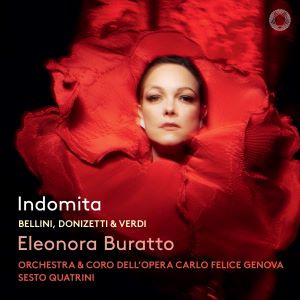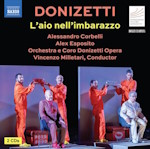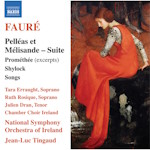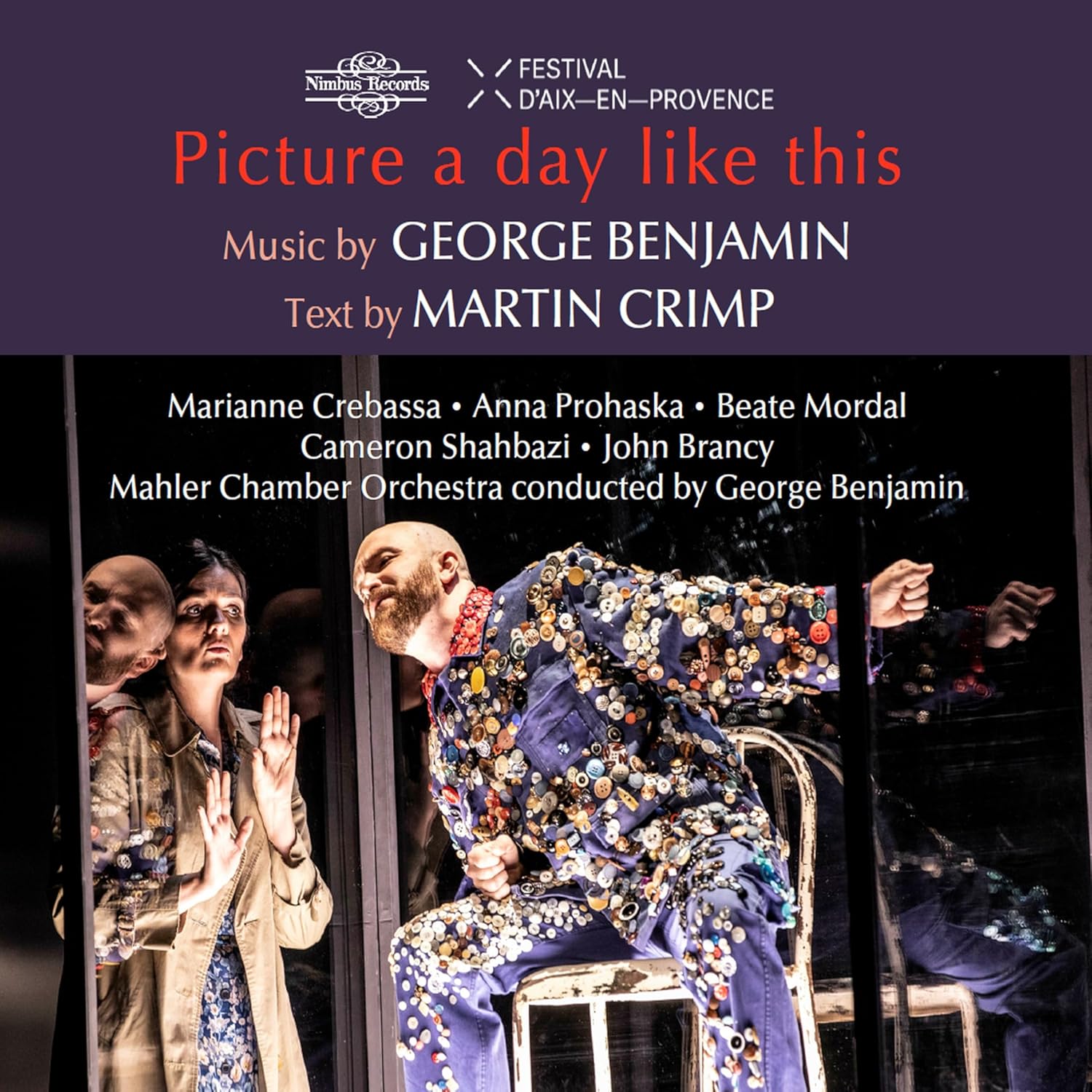
Eleonora Buratto (soprano)
Indomita
Coro dell’Opera Carlo Felice Genova
Orchestra dell’Opera Carlo Felice Genova/Sesto Quatrini
rec. 2024, Opera Carlo Felice Genova, Italy
Sung texts with English translations enclosed
Reviewed as download
Pentatone PTC5187409 [69]
Eleonora Buratto has emerged onto the international opera stage as “the most precious and complete soprano that the Italian school has produced in recent years”, wrote the big Italian daily Il Foglio a couple of years ago. Born in Mantua she studied at the conservatory in her hometown and was observed as “promising” after her Nanetta in Falstaff in Salzburg in 2013. Gradually, she has conquered the international opera houses; her debut at the Metropolitan in New York in 2016 is a landmark, and here is her debut recital, which is a summary of her repertoire so far. She has focused on the bel canto period: Bellini, Donizetti and early Verdi, but has widened her scope further. A complete Tosca is in the pipeline and may be in the market when this review is printed.
It may be easy to believe that here is another lyric voice with an aptness for coloratura – a “canary”, as they are sometimes condescendingly called. But what we meet is a fully fledged drammatico d’agilità, which was the term that was coined for Maria Callas’s voice in 1949; in other words, a dramatic singer with effortless agility. It is a vibrant voice, but not excessively so; however, vibrato is something that divides opinions. To me, the relatively mild vibrato in Eleonora Buratto’s voice is healthy and agreeable, but my wife finds it disturbing. Neither of us is right or wrong – it’s only a matter of personal taste – and when the voice expands – she actually has enormous power in reserve for the climaxes – the vibrato is still fully controlled. Maria Callas sometimes overtaxed her voice, leading to an ugly wobble.
The five scenes on this disc are presented in chronological order, beginning with Bellini’s Il pirata from 1827. It was his third opera, his first with libretto by Felice Romani (it was to be another six) and Bellini’s definitive breakthrough. What we hear is the heroine Imogene’s mad scene, which is the most famous part of the opera. Here Bellini is at his most inspired. His long, Romantic melodies caress the ear, from the beautiful orchestral Andante maestoso via the dramatic recitative Oh! S’io potessi, the aria Col sorriso d’innocenza, sung withfine legato and the virtuoso cabaletta – a true tour de force.
Three years later, Donizetti had his breakthrough when Anna Bolena premiered. Things hadn’t always gone his way in the beginning of his career, and thiswas his 35th opera – but once he was established, the successes arrived in rapid succession. Initially the libretto was regarded as better than the music, but after a while even the Milanese audiences accepted Donizetti’s greatness as composer, and I suppose that the immensely touching finale played an important part in this. Composed for the great Giuditta Pasta, who also had some input, it is a long and testing scene – close to 25 minutes – with high-lying tessitura, breakneck coloratura, big leaps and also mentally challenging with the prayer Cielo, a’ miei lunghi spasimi, sung to the well-known melody Home, sweet home -so simple and moving. Eleonora Buratto has the stamina for this with truly brilliant singing, even though I think that she could have been more inward in the prayer.
A further three years later, Donizetti presented Lucrezia Borgia, another dream role for a dramatic soprano with the technical capacity for stratospheric excursions. This role was Montserrat Caballé’s big break-through in the 1960s and the studio recording, together with Alfredo Kraus and Shirley Verrett, has for many years been a great favourite. The finale is almost as testing as the equivalent from Anna Bolena, and Ms Buratto has even more steel in her voice than Caballé.
A leap of eleven years takes us to the realm of the young Verdi and his galley years, as his apprentice period in the 1840s is sometimes called. Most of his works from that period have long been absent from the regular repertoire – apart from Nabucco, Macbeth and Luisa Miller – but during the last few decades many of them have been revived, and the family drama I due Foscari has been seen quite frequently. It has not, however, become established as a standard work, and thus it is good to have it represented here. The heroine in this opera is also named Lucrezia, and like her namesake in Donizetti’s opera she has her fair share of coloratura. At the end of the scene, she tosses off a glowing high C, but she has also a beautiful preghiera.
The other Verdi excerpt is from the rarely heard Aroldo from 1857, an extensive reworking of Stiffelio from 1850 in order to avoid the censorship. Generally ,the reworking did little to improve the opera, but this particular aria is an exception, since large portions of it were newly composed, so I am happy to report that the recital ends gloriously.
With excellent support from the choral and orchestral forces from Opera Carlo Felice, and able singing by soloists in supporting roles – see the contents list below for details – this is a thrilling collection of central scenes from five Italian operas from the mid-19th century, and a valuable calling card for the art of Eleonora Buratto.
Göran Forsling
Previous review: Ralph Moore (March 2025)
Contents
Vincenzo Bellini (1801-1835)
Il pirata (1827)
1 Andante maestoso
2 Oh! S’io potessi dissipar le nubi
3 Col sorriso d’innocenza
4 Oh, Sole! ti vela di tenebre oscure
Gaetano Donizetti (1797-1848)
Anna Bolena (1830)
5 Piangete voi?
6 Al dolce guidami
7 Qual mesto suon?*
8 Cielo, a’ miei lunghi spasimi
9 Chi mi sveglia?
10 Coppia iniqua
* Percy/Hervey Didier Pieri, tenor
Smeton Irene Savignano, mezzo-soprano
Lord Rochefort Giovanni Battista Parodi, bass
Lucrezia Borgia (1833)
11 M’odi, ah m’odi
12 Figlio! È spento!*
13 Era desso il figlio mio
*Duca Alfonso Giovanni Battista Parodi, bass
Giuseppe Verdi (1813-1901)
I due Foscari (1844)
14 No…mi lasciate
15 Tu al cui sguardo onnipossente
16 Che mi rechi?… La clemenza?… s’aggiunge lo scherno!
Aroldo (1857)
17 Oh, cielo! Dove son’io!
18 Ah dagli scanni eterei*
19 Mina!…Voi qui!*
20 Ah dal sen di quella tomba
*Godvino Didier Pieri, tenor
Buying this recording via a link below generates revenue for MWI, which helps the site remain free




















